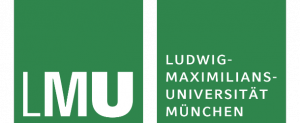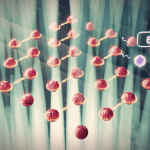Quantum News Briefs September 13: Insights from a Visit to IBM’s Quantum Research Labs, Device-independent QKD (DIQKD) will make hacking futile; Researchers develop ultrathin ‘Metasurface’ device for quantum tech & MORE

Quantum News Briefs today opens with “Insights from a Visit to IBM’s Quantum Research Labs”, followed by Device-independent QKD (DIQKD) research that will make hacking futile; and third a report on Researchers developing ultrathin ‘Metasurface’ device for quantum tech & MORE.
Insights from a Visit to IBM’s Quantum Research Labs
 Kevin Krewell, a Forbes contributor, recently visited IBM’s Quantum Research Labs in Yorktown Heights, New York abd talked with Jay Gambetta, IBM Fellow and VP of Quantum Computing, IBM Research and his team working to advance quantum computing. Quantum News Briefs summarizes key points below. Read the complete interview and analysis here.
Kevin Krewell, a Forbes contributor, recently visited IBM’s Quantum Research Labs in Yorktown Heights, New York abd talked with Jay Gambetta, IBM Fellow and VP of Quantum Computing, IBM Research and his team working to advance quantum computing. Quantum News Briefs summarizes key points below. Read the complete interview and analysis here.
Krewall opens with this explanation, “The goal for the IBM researchers is to make quantum computing as ubiquitous as possible to solve unique problems. To make quantum systems more accessible, they need to become “cloud-native” or “serverless,” in that they become a cloud resource charged based on usage. In this era of disaggregated data centers, quantum can be one of the specialized compute elements available to classical computers, much like GPUs are today.”
Krewall then reviews IBM’s goal of 1 million qubits: IBM Research is following a similar path as the one taken with classical computers: put more and faster qubits on a chip using silicon scaling; interconnect multiple quantum die as tiles; and build clusters of quantum computers working together.
While the goal is to build systems with millions of raw qubits for fault-tolerant quantum computing, there’s much work that can be done in the interim to improve the performance of raw qubits to do more work sooner by using quantum error mitigation. To get better quantum results using today’s relatively noisy and short-lived qubits requires some workarounds. IBM Research has come up with a couple of error mitigation techniques that are proving useful.
The ultimate goal for practical quantum computing is to provide a advantage over classical computing to solve significant problems in a reasonable timeframe.
*****
Researchers develop ultrathin ‘Metasurface’ device for quantum tech
 Scientists at Sandia National Laboratories and the Max Planck Institute for the Science of Light have reported on a device that could replace a roomful of equipment to link photons in a bizarre quantum effect called entanglement. This device — a kind of nano-engineered material called a metasurface — paves the way for entangling photons in complex ways that have not been possible with compact technologies.
Scientists at Sandia National Laboratories and the Max Planck Institute for the Science of Light have reported on a device that could replace a roomful of equipment to link photons in a bizarre quantum effect called entanglement. This device — a kind of nano-engineered material called a metasurface — paves the way for entangling photons in complex ways that have not been possible with compact technologies.
Research for the groundbreaking device, which is a hundred times thinner than a sheet of paper, was performed, in part, at the Center for Integrated Nanotechnologies, a Department of Energy Office of Science user facility operated by Sandia and Los Alamos national laboratories. Sandia’s team received funding from the Office of Science, Basic Energy Sciences program.
The new metasurface acts as a doorway to this unusual quantum phenomenon. In some ways, it’s like the mirror in Lewis Carrol’s “Through the Looking-Glass,” through which the young protagonist Alice experiences a strange, new world.
Instead of walking through their new device, scientists shine a laser through it. The beam of light passes through an ultrathin sample of glass covered in nanoscale structures made of a common semiconductor material called gallium arsenide. “It scrambles all the optical fields,” said Sandia senior scientist Igal Brener, an expert in a field called nonlinear optics who led the Sandia team. Occasionally, he said, a pair of entangled photons at different wavelengths emerge from the sample in the same direction as the incoming laser beam.
The Science paper outlines how the team successfully tuned their metasurface to produce entangled photons with varying wavelengths, a critical precursor to generating several pairs of intricately entangled photons simultaneously.
*****
Device-independent QKD (DIQKD) will make hacking futile
 Device-independent QKD (abbreviated DIQKD) has been theoretically known since the 1990s, but it has only just been experimentally implemented by an international research team headed by Ludwig Maximilian University of Munich physicist Harald Weinfurter and Charles Lim from the National University of Singapore (NUS). The cryptographic protocol is unaffected by the device. Quantum News Briefs summarizes and shares recent report from SciTechDaily.
Device-independent QKD (abbreviated DIQKD) has been theoretically known since the 1990s, but it has only just been experimentally implemented by an international research team headed by Ludwig Maximilian University of Munich physicist Harald Weinfurter and Charles Lim from the National University of Singapore (NUS). The cryptographic protocol is unaffected by the device. Quantum News Briefs summarizes and shares recent report from SciTechDaily.
With conventional QKD methods, security is guaranteed only when the quantum devices used have been characterized sufficiently well. “And so, users of such protocols have to rely on the specifications furnished by the QKD providers and trust that the device will not switch into another operating mode during the key distribution,” explains Tim van Leent, one of the four lead authors of the paper alongside Wei Zhang and Kai Redeker. It has been known for at least a decade that older QKD devices could easily be hacked from outside, continues van Leent.
In DIQKD, the test is used “specifically to ensure that there are no manipulations at the devices – that is to say, for example, that hidden measurement results have not been saved in the devices beforehand,” explains Weinfurter.
“With our method, we can now generate secret keys with uncharacterized and potentially untrustworthy devices,” explains Weinfurter.
One of the next goals is to expand the system to incorporate several entangled atom pairs. “This would allow many more entanglement states to be generated, which increases the data rate and ultimately the key security,” says van Leent.
*****
The geopolitical rush to develop quantum technologies as seen from India

The United States, China, Russia and UK are the global players who have a head start in the quantum domain. The intent of countries to develop quantum computers has become irresistible to gain a strategic lead in cybersecurity, intelligence operations and economic industry. Ved Shinde is a student of Political Science and Economics at St Stephens College, Delhi University, India is the author of this overview of global quantum development in The Geopolitics.
The nations mentioned above have devoted exponential monetary resources toward quantum research and development. Currently, the United States houses the world’s largest quantum computer, IBM’s Eagle. IBM also seeks to dominate the quantum space with a mega-computer chip that could potentially process over 1.000 qubits. Technological powerhouses like Google, Microsoft and IBM are all American companies that allow the United States to retain a strong lead in quantum computing.
China, the United States and the UK have competitive national plans for attracting computing talent and expertise. For example, the Chinese have their “Thousand Talents Plan” which has transfixed global eyeballs. Beijing is splurging monies to lure scientists and researchers. China has also invested in two different architectural pathways for gaining computational advantages in quantum supremacy. These pathways are light-based Gaussian boson sampling and electron based-random quantum circuit sampling, which is also used in IBM’s Eagle.
Both United States and China have further imposed tit-for-tat restrictions on domestic companies to limit technological exchange with each other. This has raised questions from different quarters around geopolitical dynamics shaping quantum technology supply chains. Due to their concentrated and capital-intensive nature, these supply chains are under the threat of geopolitical rivalries. This will intensify as intellectual property regimes and global standards for quantum technologies are developed.
France, Germany, Australia, Canada, Switzerland, Austria, Israel, Netherlands, India, South Korea, Singapore and Japan are a few other nations that have also crafted well-defined national initiatives in quantum technologies.
For a country like India, quantum technologies hold multiple possibilities. Experts point out that quantum encryption can secure communications, quantum simulation can assist in exploring materials for green technologies and quantum sensing can help in mapping the impact of climate change. India has already launched a National Mission on Quantum Technologies and Applications (NMQTA) with a total budgetary outlay of eight thousand crore rupees and has demonstrated its intent in developing these technologies.
*****
Sandra K. Helsel, Ph.D. has been researching and reporting on frontier technologies since 1990. She has her Ph.D. from the University of Arizona.























